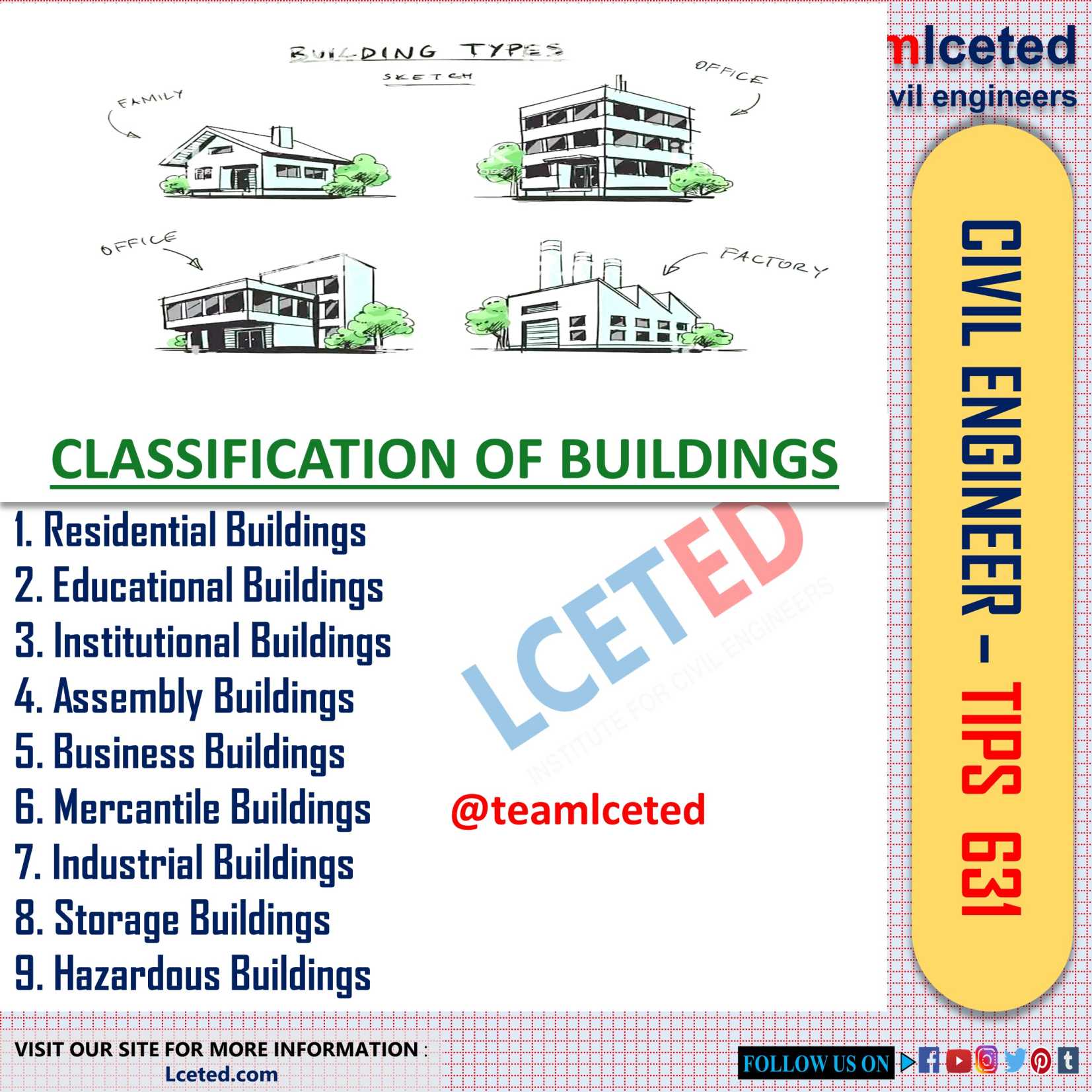CLASSIFICATION OF BUILDINGS
According
to National Building Code, buildings are classified based on occupancy and type
of construction.
Occupancy Classification
Under
occupancy classification, buildings are grouped under the categories mentioned
below.
1. Residential Buildings
These include any building in which sleeping
accommodation is provided for normal residential purposes, with or without
cooling or dining or both facilities (e.g., houses, lodges, dormitories,
apartment houses (flats), hotels, etc.).
2. Educational Buildings
These include any building used for school, college or
day-care purposes involving assembly for instruction, education or recreation.
3. Institutional Buildings
These include any building which is used for purposes
such as medical or other treatment, care of persons suffering from physical or
mental illness, etc. (e.g., hospitals and sanitorium, custodial institutions,
penal and mental institutions, etc.).
4. Assembly Buildings
These include any building where a group of people
congregate or gather for amusement, recreation, social, religious, patriotic,
civil, travel, etc. (e.g., theatres, motion picture houses, auditoria, museums,
etc.).
5. Business Buildings
These include any building which is used for the transaction
of business (other than mercantile buildings discussed below) for the keeping of
accounts and records, professional establishments, service facilities, etc.
(e.g., town halls, courts, libraries, etc.).
6. Mercantile Buildings
These include any building which is used as shops,
stores or market, for display and sale of merchandise (either wholesale or
retail). Storage and service facilities incidental to the sale of merchandise
and located in the same buildings shall be included under this group.
7. Industrial Buildings
These include any building in which products of
materials of all kinds and properties are fabricated, assembled, manufactured
or processed. (e.g., assembly plants, power and gas plants, refineries,
diaries, sawmills, etc.).
8. Storage Buildings
These include any building used primarily for the
storage or sheltering of goods, wares or merchandise, vehicles or animals, etc.
(e.g., warehouses, cold storages, garages, hangers, grain elevators, etc.).
9. Hazardous Buildings
These include any building which is used for the
storage, handling, manufacturing or processing of highly combustible or
explosive materials or products which are liable to burn with extreme rapidity;
manufacturing or processing toxic alkalis, acids or chemicals producing flame,
irritant or corrosive gases, etc.
Types of Construction Based on Fire-Resistance
Under this classification, buildings are classified into
four categories are based on the fire resistance offered by a building as Type 1, Type 2, Type 3, and Type 4.
Type
1:
That provides 4 hours of fire resistance.
Type
2:
That provides 3 hours of fire resistance.
Type
3:
That provides 2 hours of fire resistance.
Type
4:
That provides 1-hour of fire resistance.
Must read: How Do We Calculate The Dead Load In The Slab?
If you find
This information is helpful, please share it.
Thanks! For reading the article.









It is not detail
ReplyDelete